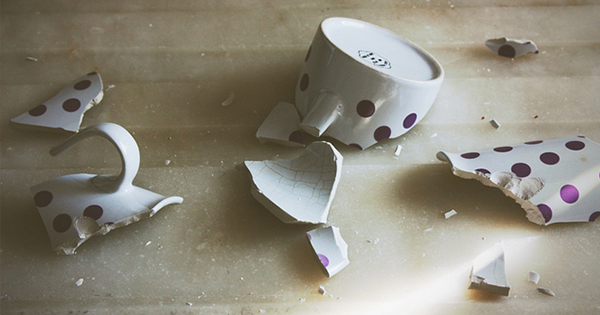
When it started at 1:30 in the morning last Sunday, our bed felt like a boat pushed out into rough seas. Huge rollers lifted us, and then we plunged. A heavy chop pummeled our small craft, making it shimmy and creak. Gusts of wind were loud in our ears.
I sat up and sputtered to my husband: “Earthquake! The kids!”
While the three-year-old halfway dozed in the bottom bunk, the six-year-old above her was sitting upright and terrified in her swaying bed. The flying bridge always rocks the most in a storm. In the glow of a nightlight, we lowered her off the bed as we heard something shatter downstairs. A wine glass maybe, from where it sat drying on the counter after the previous night’s dinner with friends, or a mug wiggling out of the cupboard.
As the shaking continued, I pulled the six-year-old onto my lap, where I sat in my underwear in the middle of the floor.
“What should we do?”
“Let’s get in the bathtub,” my husband advised.
“What?” I gasped. “That makes no sense!” Books were slumping off shelves, and then something harder and metallic smacked onto the wooden floor.
We were in the midst of a 7.1 magnitude earthquake and were debating whether the bathtub was a safe place to ride it out.
I’ve experienced many earthquakes since moving to Alaska—earthquakes that made parked cars sway outside my window or that left ceiling lamps swinging vigorously on chains above my head. Those quakes have always felt like waiting games: Is the shaking going to stop or do I actually need to do something? But this time, the waiting felt endless.
It is easy to accept in a rational way that we live along the Pacific Rim of Fire, the most seismically active region in the world, harder to bring this reality into the practice of our daily lives. We’ve done nothing to prepare for a serious quake. And although time and again we’ve heard we should head for a doorframe or huddle beneath a table, in the moment of panic, we did neither. We just waited.
Finally the trembling stopped. It had lasted only about half a minute. The three–year-old drifted back into sleep, but the six-year-old, who, like my husband and me, had been jolted awake by a shot of adrenaline, refused to go back to bed. We took her into ours and lay with her between us while we scanned our phones for updates. Judging by the online banter, the whole town was wide awake. And no one felt like sleep. Someone suggested we all meet at the largest bar in town for wings and drinks.
Despite the severity of the earthquake, damage was limited. But the shaking did leave a crack over a foot wide in a road 70 miles north of us. And natural gas fires destroyed a few homes in that area. Nearby, one friend lost a few family heirlooms. Another got a crack in her drywall. Grocery stores had a lot of cleanup to do on Sunday morning. At our house, the quake broke a doll-sized teapot that neither of my girls play with anymore. That was the crash we’d heard.
For a while, all I could think about was how terrifying it must have been to live through the 1964 earthquake in Alaska, a 9.2-magnitude temblor that killed 139 people, sent tsunamis as far south as California, and destroyed downtown Anchorage. That quake released more than 1,000 times the energy of the rattler last weekend. I’ve heard accounts from 50 years ago of massive landslides bringing whole neighborhoods down, bathtubs shooting out the sides of houses, and huge waves dumping boats far inland. The retreating water left tall spruce trees festooned with jellyfish.
In the days that followed our quake, we relived it in photos and videos. Security camera footage from a bar down the street shows first the liquid in all the glass vessels on the counter starting to jiggle and then, from out of the frame, a bottle drops to the floor and then another comes shooting across the screen. Then the shaking gets fierce, and, like penguins diving en masse into the sea, dozens of bottles plummet off counters and shelves.
Around town, people started talking about survival kits and contingency plans. A friend asked if she could list us as contacts in an emergency bag she’s creating for her daughter. No bathtub debates for us, next time. It’ll be Drop, Cover, and Hold On. And, when we get around to it, we’ll put together that emergency kit.

